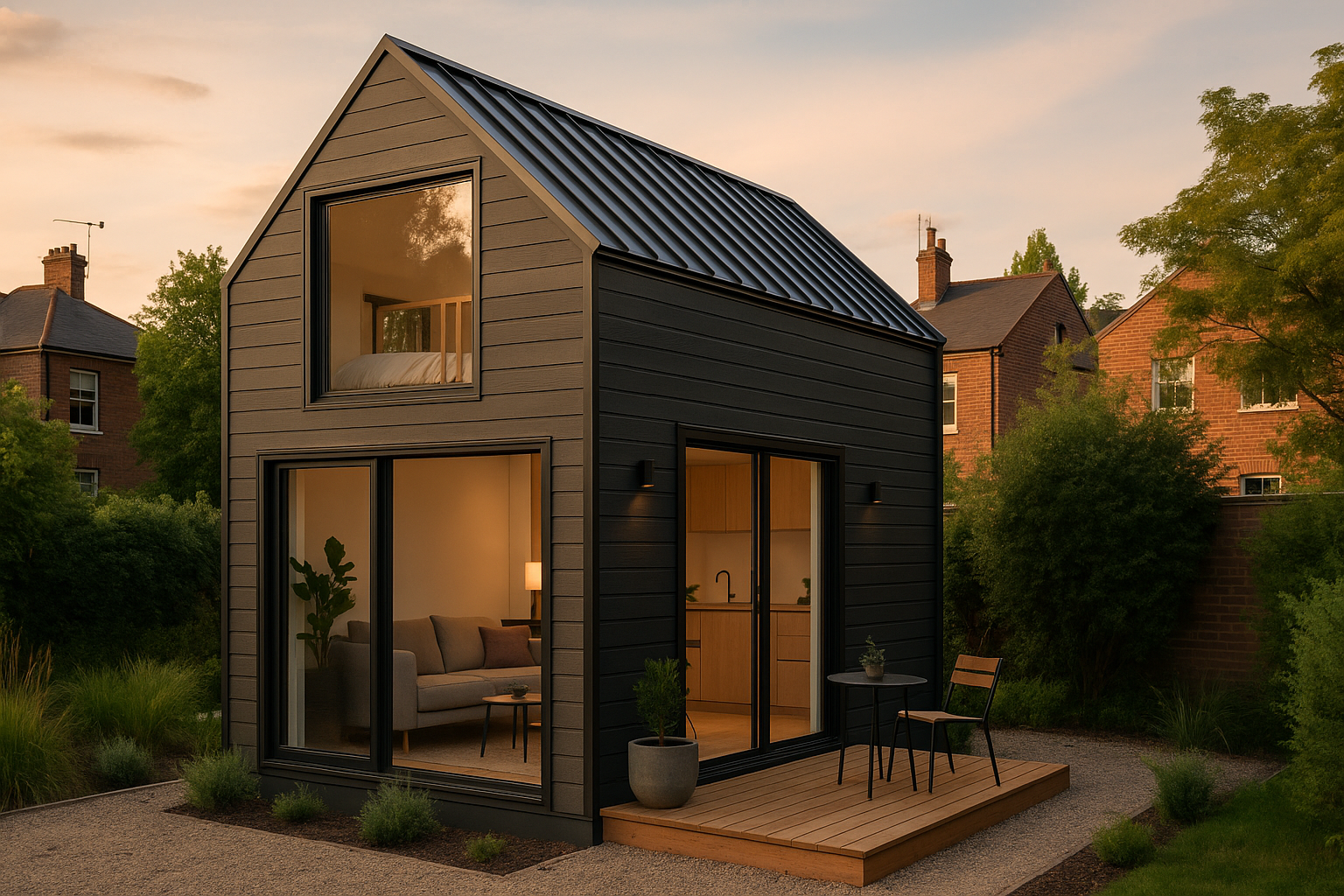
Estimated reading time: 10 minutes
Key Takeaways
- Compact Efficiency: Mini homes are designed within 100 to 400 square feet to maximize every inch of space.
- Urban & Sustainable: They address rising housing costs and limited space while promoting eco-friendly living.
- Downsizing Benefits: Enjoy lower expenses, reduced maintenance, and a clutter-free lifestyle.
- Innovative Design: Features include multi-functional furniture, vertical storage, and adaptable layouts.
- Flexible Living: Ideal for urban professionals, minimalists, and eco-conscious individuals.
Table of contents
- Introduction
- Understanding Mini Homes and the Urban Lifestyle
- Benefits of Downsizing: Save Money, Live Better
- Downsizing Tips for Transitioning to Mini Homes
- Space-Saving Solutions and Design Tips for Mini Homes
- Creating a Cozy, Functional Mini Home
- Conclusion: Why Mini Homes Are a Smart Urban Choice
- Frequently Asked Questions
Introduction
Mini homes are reshaping the way we live, especially for city dwellers and those seeking a simpler, more efficient lifestyle. A mini home is a fully functional dwelling, expertly designed to use every inch of space, typically ranging between 100 and 400 square feet (source). As cities face rising housing costs, limited space, and growing environmental concerns, compact living is gaining momentum. For a wider perspective on tiny home benefits, see Tiny Home Living: The Big Benefits and Lifestyle Rewards of Living Small.
For anyone searching for budget homes or exploring downsizing tips, mini homes represent the future. They are ideal for urban professionals, minimalists, and eco-conscious individuals who want to embrace an urban lifestyle without the stress and expense of traditional housing. Let’s explore how mini homes can help you unlock a smart, sustainable, and stylish way of living.
Understanding Mini Homes and the Urban Lifestyle
Mini homes, sometimes called tiny houses, are compact yet complete dwellings. They range from 100 to 400 square feet in size and include everything needed for comfortable living—a sleeping area, kitchen, bathroom, and often a small living space (source).
Key Features of Mini Homes:
- Space Maximization: Clever design ensures every square foot is usable. Expect built-in storage, multi-functional furniture, and convertible living areas (source). For additional design concepts, check Tiny Home Living: The Big Benefits and Lifestyle Rewards of Living Small.
- Adaptability: Mini homes can be stationary or built on wheels, offering a flexible lifestyle.
- Affordable Living: They provide a budget-friendly alternative in cities with high living costs.
- Comfort and Practicality: With smart layouts and personalized touches, these homes balance efficiency and style.
Why Mini Homes Fit the Modern Urban Lifestyle:
- Addressing Rising Property Prices: Offering quality living with lower financial stress.
- Compact & Minimalist Design: Suited to those who value efficiency and simplicity.
- Urban Professional Appeal: Ideal for those seeking a modern, affordable space near work and recreation.
- Perfect for Downsizers: Empty nesters and retirees appreciate the simplicity and reduced upkeep (source).
Benefits of Downsizing: Save Money, Live Better
Downsizing to a mini home brings a host of advantages for budget home seekers and anyone aiming for a more meaningful urban lifestyle.
Financial Benefits
- Lower Purchase Price: Mini homes cost significantly less than traditional homes.
- Affordable Furnishing: Smaller living spaces require less investment in furnishings and appliances.
- Reduced Maintenance: With less space, expenses on upkeep and repairs are minimized (source). For further insights, see this resource.
Environmental Sustainability
- Energy Efficiency: Less space means less energy needed for heating, cooling, and lighting.
- Reduced Environmental Impact: Mini homes have a smaller footprint (source).
- Simplified Waste Management: A minimalist lifestyle naturally results in less waste.
Lifestyle Advantages
- Less Clutter: Downsizing helps you focus on what truly matters.
- Easy Upkeep: Smaller spaces reduce the time and effort needed for maintenance.
- Increased Mobility: Many mini homes are designed for easy relocation.
- Focus on Experiences: Reduced clutter allows more resources to be directed towards living fully.
Downsizing Tips for an Efficient Life
- Start Small: Begin by reducing belongings one room at a time.
- Set Priorities: Keep what is essential and let go of the excess.
- Organize Smartly: Use boxes, labels, and storage solutions to streamline your space.
Downsizing Tips for Transitioning to Mini Homes
Transitioning to a mini home is more than just choosing a smaller space—it requires a holistic shift in mindset and lifestyle.
Decluttering: The Essential First Step
- Sort Belongings: Categorize items into essentials, maybes, and non-essentials.
- Donation and Recycling: Donate, sell, or recycle items you no longer need.
- Sentimental Items: Keep only what truly matters and preserve memories through photos (source). For more ideas, visit this guide.
Picking the Right Mini Home
- Consider Your Needs: Evaluate size, layout, and must-have features.
- Evaluate Options: Decide between prefab models, custom builds, or mobile units.
- Budget Wisely: Factor in both purchase costs and ongoing expenses.
Adjusting to Compact Living
- Adopt Minimalism: Embrace the philosophy of “less is more” for a stress-free life.
- Change Habits: Shift to mindful shopping and regular organization.
- Stay Positive: Enjoy the benefits of a clutter-free and flexible lifestyle.
Downsizing Tips in Action
- Utilize multipurpose containers and installed shelves.
- Designate specific zones for hobbies and daily routines.
Space-Saving Solutions and Design Tips for Mini Homes
Maximize every square inch in your mini home with these proven solutions and design tips:
Multi-Functional Furniture
- Sofa Beds: Serve as both seating and sleeping areas.
- Fold-Out Tables: Transform your workspace into a dining area with ease.
- Built-In Storage: Integrate storage solutions into stairs and benches (source, source). For more examples, see this resource.
Vertical Storage Concepts
- Shelving: Use wall space to add extra storage for books, dishes, or décor.
- Pegboards: Organize kitchen tools and office supplies effectively.
- Hanging Organizers: Keep essentials accessible and off the counters.
Convertible Spaces
- Expandable Rooms: Utilize foldable partitions or movable furniture to adapt spaces.
- Dual-Purpose Design: Furniture that doubles as multiple functional pieces (source).
Smart Layout Design
- Open Floor Plans: Remove unnecessary walls to create a sense of spaciousness.
- Sliding Doors: Opt for sliding doors instead of traditional swinging ones to save space.
- Strategic Windows: Position windows to let in natural light and enhance openness.
Extra Space-Saving Solutions:
- Incorporate stackable or nestable items to minimize clutter.
- Use hooks behind doors and magnetic strips in the kitchen for added organization.
Creating a Cozy, Functional Mini Home
Create an inviting and practical living space by applying these tips:
Maximize Natural Light
- Large Windows: Invite abundant sunshine to create an open feel.
- Light Color Palettes: Whites, pale greys, and pastels help reflect light and enlarge the space visually.
Flexible, Changeable Décor
- Swap-able Accessories: Refresh your interior with seasonal changes in rugs, pillows, and throws.
- Adjustable Lighting: Utilize repositionable lamps and LED strips to create different moods.
Personalize Your Space
- Wall Art: Hang meaningful art, photos, or inspiration boards that resonate with you.
- Custom Furnishings: Consider locally made, multi-use pieces that fit your style and needs.
- Display Keepsakes: Dedicate shelves or nooks to treasured items that reflect your personality.
Increase the Perception of Space
- Mirrors: Place mirrors strategically to double the perception of space and reflect light.
- Transparent Furniture: Use glass tables or acrylic chairs to maintain an uncluttered look.
- Uncluttered Surfaces: Keep counters and tables clear to enhance the airy feel.
Adapt as Needed
- Rearrange Regularly: Experiment with different layouts to keep the space fresh and functional.
- Smart Storage: Employ baskets and organizers to maintain order and flexibility.
Conclusion: Why Mini Homes Are a Smart Urban Choice
Mini homes are more than just a housing trend—they are a thoughtful response to modern urban challenges. By adopting the mini home lifestyle, you benefit from:
- Financial Savings: Lower purchase and running costs translate to more accessible homeownership.
- Sustainability: Reduced environmental impact through energy efficiency and minimal waste.
- Simplicity and Comfort: A clutter-free environment that shifts focus from possessions to meaningful experiences.
Efficient space utilization and creative, actionable downsizing tips can turn even the smallest footprint into a stylish, cozy, and highly functional home. Whether you’re an urban professional, minimalist, or eco-conscious individual, mini homes offer a smart alternative for modern living. For further insights and benefits, visit this comprehensive guide.
Frequently Asked Questions
What is a mini home?
A mini home is a compact, fully functional dwelling that typically ranges between 100 and 400 square feet. It is designed to maximize space efficiency while providing all the essential features for comfortable living.
How do mini homes address urban challenges?
Mini homes offer a sustainable and cost-effective solution to rising housing costs and limited living space by using smart layouts, multi-functional furniture, and efficient design principles.
Are mini homes suitable for families?
While mini homes are ideal for singles, couples, downsizers, and urban professionals, families need to carefully consider space requirements and layout options to ensure the home meets everyone’s needs.

Leave a Reply